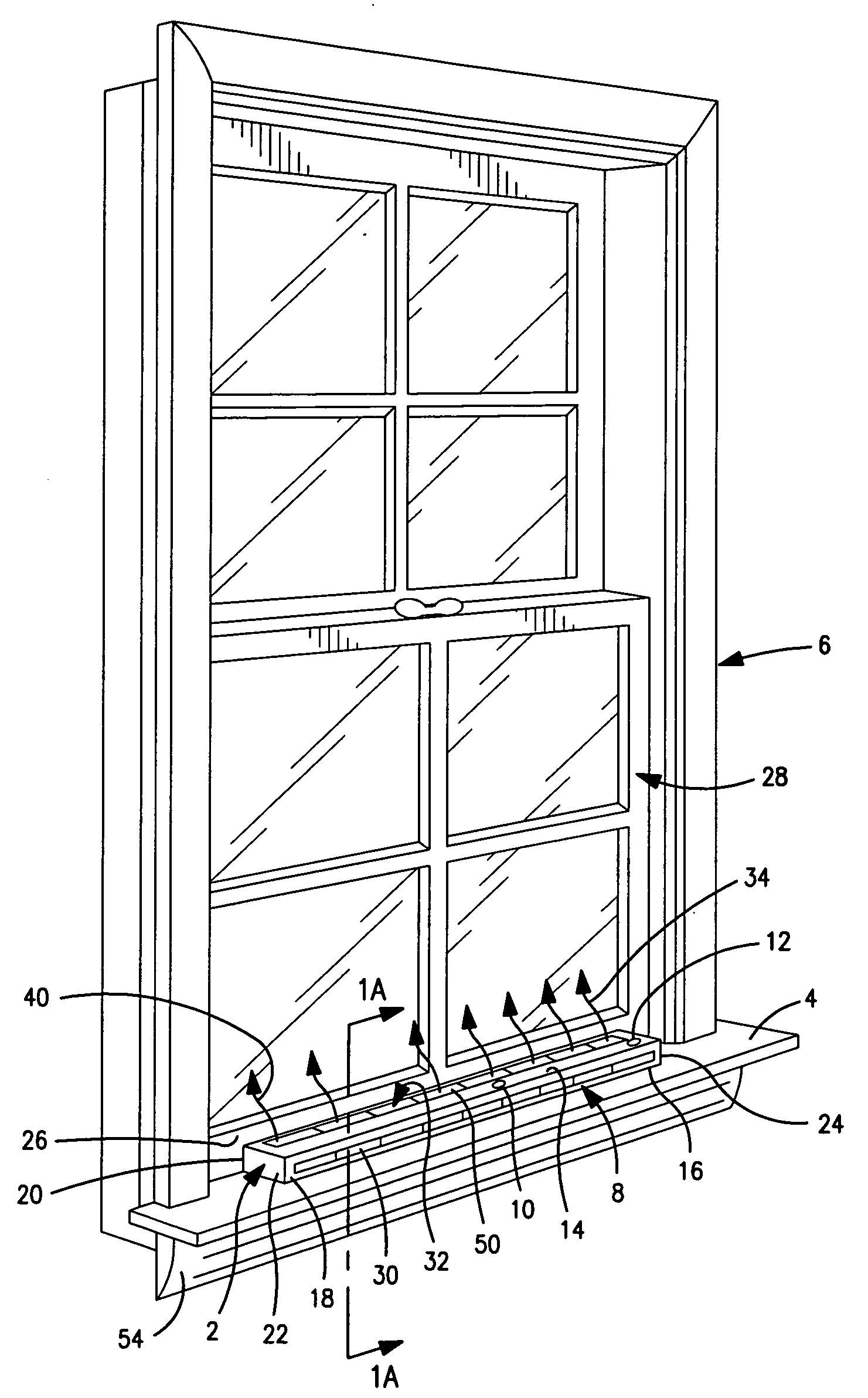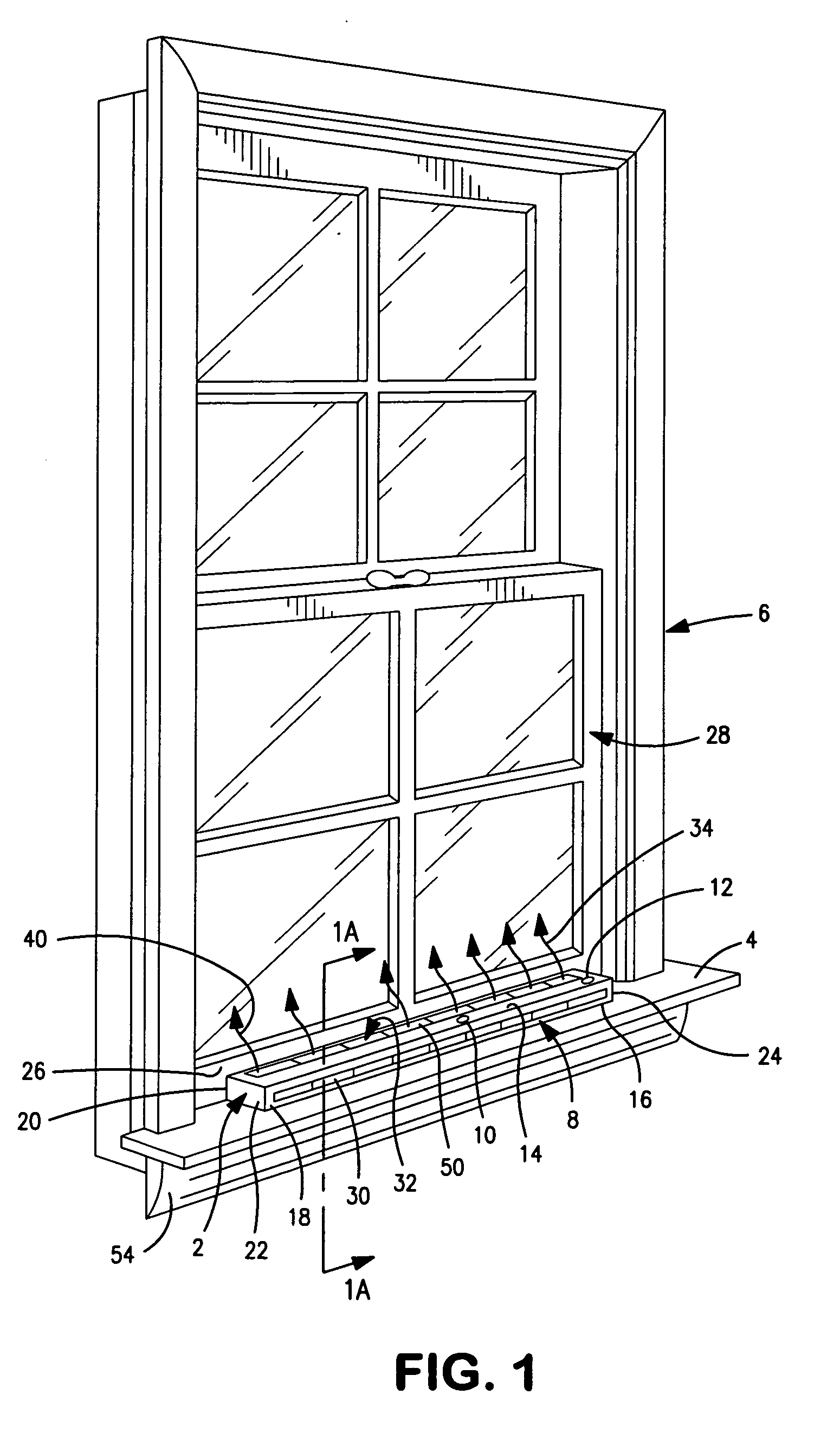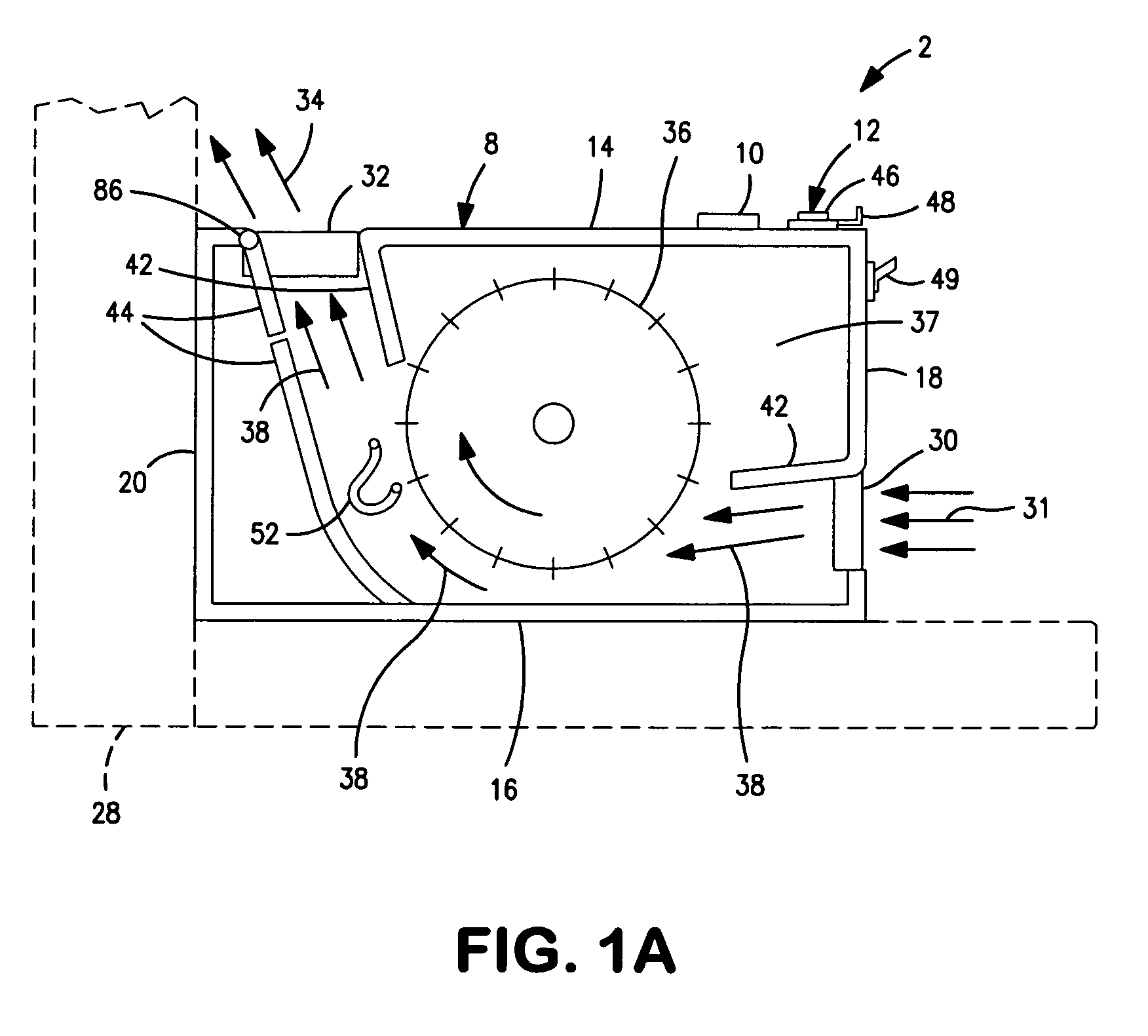Window condensation control
- Summary
- Abstract
- Description
- Claims
- Application Information
AI Technical Summary
Benefits of technology
Problems solved by technology
Method used
Image
Examples
example
[0157]FIGS. 8A and 8B illustrate a test set-up which was used for testing an air handler of the invention similar to the one described with respect to FIGS. 7 and 8. FIG. 8A shows a cross-section of the test set-up. FIG. 8B shows the same test set-up in front elevation view. The cross-section of FIG. 8A reveals a conventional double-hung window mounted in a conventional sash, and held in typical 6-inch nominal framing. The outside of the window frame is boxed in and filled with conventional fiberglass insulation, thus to simulate a conventional window installation in typical residential construction.
[0158]On the rear of the window structure is mounted a rear closure panel 118 which closes off the rear of the window from the ambient environment, thus creating a chilling cavity 120.
[0159]The window unit as tested was 2 feet wide by 3 feet tall. U-values for the upper and lower glazing units 122, 124 were 0.35 W / m*K.
[0160]Before start of the tests, the rear surface of the window frame ...
PUM
 Login to View More
Login to View More Abstract
Description
Claims
Application Information
 Login to View More
Login to View More - R&D
- Intellectual Property
- Life Sciences
- Materials
- Tech Scout
- Unparalleled Data Quality
- Higher Quality Content
- 60% Fewer Hallucinations
Browse by: Latest US Patents, China's latest patents, Technical Efficacy Thesaurus, Application Domain, Technology Topic, Popular Technical Reports.
© 2025 PatSnap. All rights reserved.Legal|Privacy policy|Modern Slavery Act Transparency Statement|Sitemap|About US| Contact US: help@patsnap.com



